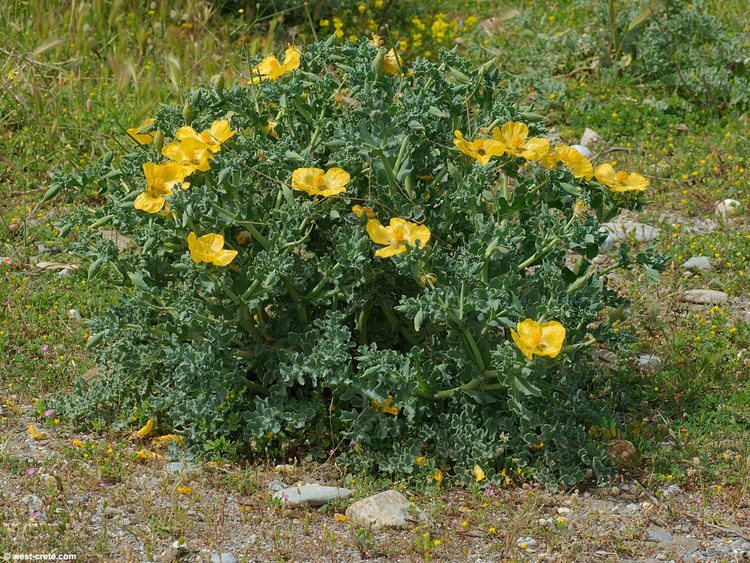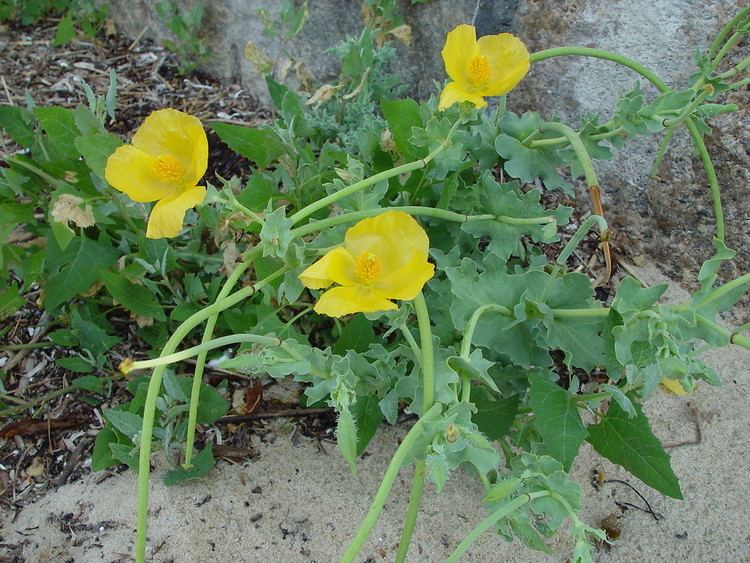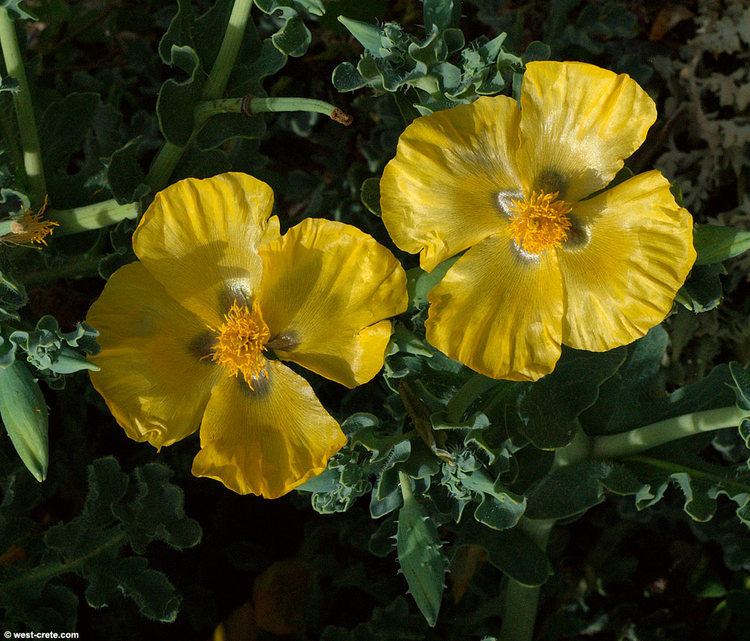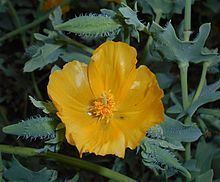Rank Species | Genus Glaucium Higher classification Glaucium | |
 | ||
Similar Glaucium, Papaveraceae, Glaucium corniculatum, Cakile maritima, Eryngium maritimum | ||
glaucium flavum leaf
Glaucium flavum (yellow hornpoppy or yellow horned poppy) is a summer flowering plant in the Papaveraceae family, which is native to Northern Africa, Macronesia, temperate zones in Western Asia and the Caucasus, as well as Europe. Habitat: the plant grows on the seashore and is never found inland. All parts of the plant, including the seeds, are toxic and can produce a range of symptoms up to and including respiratory failure resulting in death FDA poisonous plants database. It is a noxious weed in some areas of North America, where it is an introduced species. The thick, leathery deeply segmented, wavy, bluish-grey leaves are coated in a layer of water retaining wax. The sepal, petals and stamen have a similar structure and form to the Red Poppy (Papaver rhoeas) except the sepals are not hairy. Prolific quantities of seeds are held in a distinctive horn shaped fruit some 15 to 30 cm in length, which is divided into two chambers.
Contents
- glaucium flavum leaf
- Adormidera mar tima glaucium flavum http riomoros blogspot com es
- In poetry
- Uses
- References

Adormidera mar tima glaucium flavum http riomoros blogspot com es
In poetry
A poppy grows upon the shore,
Bursts her twin cups in summer late:Her leaves are glaucus-green and hoar,
Her petals yellow, delicate.She has no lovers like the red,
That dances with the noble corn:Her blossoms on the waves are shed,
Where she stands shivering and forlorn.Uses

Glaucine is the main alkaloid component in Glaucium flavum. Glaucine has bronchodilator and antiinflammatory effects, acting as a PDE4 inhibitor and calcium channel blocker, and is used medically as an antitussive in some countries. Glaucine may produce side effects such as sedation, fatigue, and a hallucinogenic effect characterised by colourful visual images, and as a recreational drug. For a detailed bibliography on Glaucine and Glaucium flavum see: National Agricultural Library (Glaucium flavum entry)


